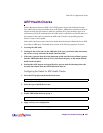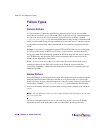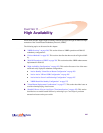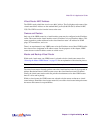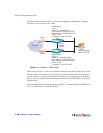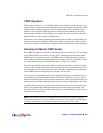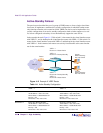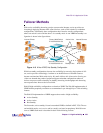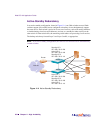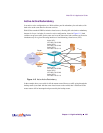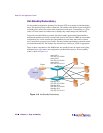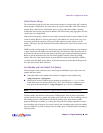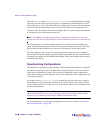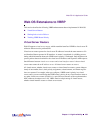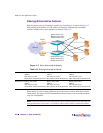
Web OS 10.0 Application Guide
Chapter 11: High Availability
253
212777-A, February 2002
Failover Methods
With service availability becoming a major concern on the Internet, service providers are
increasingly deploying Internet traffic control devices, such as Web switches, in redundant
configurations. Traditionally, these configurations have been hot-standby configurations,
where one switch is active and the other is in a standby mode. A non-VRRP hot-standby con-
figuration is shown in the figure below:
Figure 11-3 A Non-VRRP, Hot-Standby Configuration
While hot-standby configurations increase site availability by removing single points-of-fail-
ure, service providers increasingly view them as an inefficient use of network resources
because one functional Web switch sits by idly until a failure calls it into action. Service pro-
viders now demand that vendors’ equipment support redundant configurations where all
devices can process traffic when they are healthy, increasing site throughput and decreasing
user response times when no device has failed.
Web OS high availability configurations are based on VRRP. The Web OS implementation of
VRRP includes proprietary extensions to accommodate Layer 4 though Layer 7 Web switching
features.
The Web OS implementation of VRRP supports three modes of high availability:
n Active-Standby
n Active-Active
n Hot-Standby
The first mode, active-standby, is based on standard VRRP, as defined in RFC 2338. The sec-
ond and third modes, active-active and hot-standby, are based on proprietary Web OS exten-
sions to VRRP. Each mode is described in detail in the following sections.
Intranet Servers
NFS Server
A
B
Intranet Clients
Client Switches
Primary Web Switch
IP: 200.200.200.100
Secondary Web Switch
IP: 200.200.200.101
Active Links
Backup Links
Inter-switch
Link



